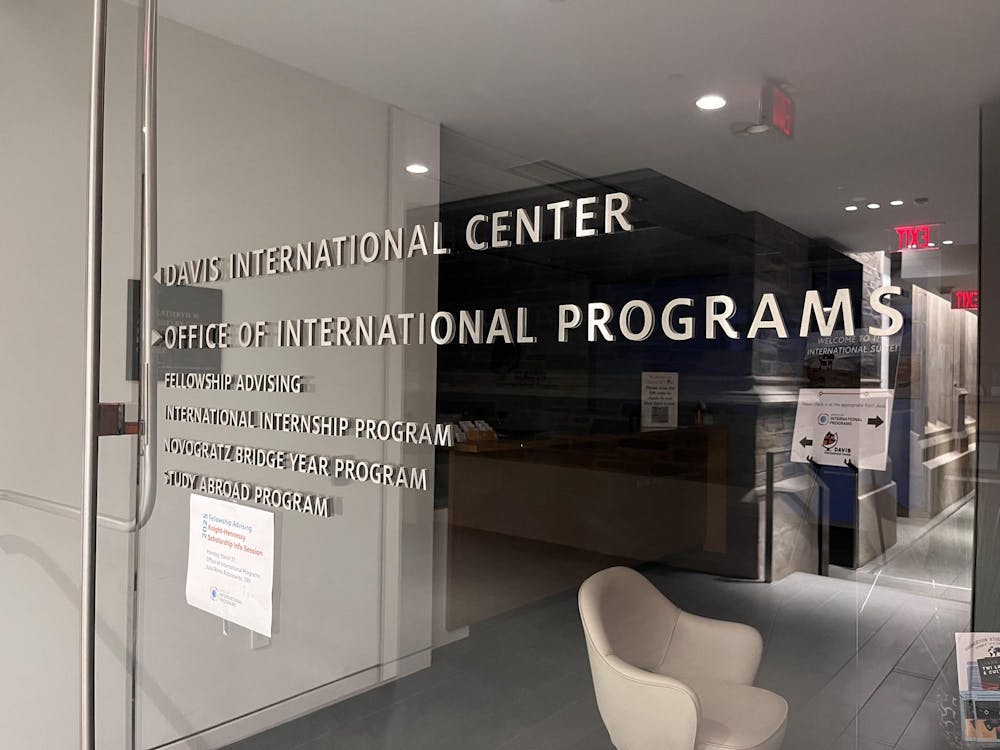Just as Shirley Tilghman was being named the 19th president of the University on Saturday, the bell in Nassau Hall almost symbolically began to toll. And yesterday as President Shapiro reminisced about his 13-year tenure in an interview with The Daily Princetonian, the bell again tolled, this time marking the end of a term.
Shapiro headed to his office Saturday morning to polish a paper that he had been working on titled, "Science, Anxiety and Meaning." For him, it was a rare opportunity for research and teaching — two aspects of his life that have been difficult for him to pursue during the past 22 years.
After eight years as the president of the University of Michigan and 13 at the helm of Princeton, Shapiro may soon have more time for teaching and research.
"I told myself at the start that I would not retire as a University president," Shapiro said.
After trading the presidency with Tilghman on June 15, Shapiro said he will travel to Europe to spend time with his family in a London apartment he and his wife have rented for the summer.
Shapiro will return to campus in September, but will take the semester off to relax, research and regroup for courses he said he hopes to teach on bioethics and public policy for the Wilson School in spring 2002.
Though he is 65, Shapiro said he does not have any immediate plans to retire. "I'll know when I think that I'm not giving as much as I should to students," he said. "That will be the signal for me."
But on Saturday, Shapiro still had presidential duties, attending a press conference announcing Tilghman as the next president. While Shapiro toured the campus talking with trustees, Tilghman posed for photographs in front of Nassau Hall.

While Tilghman answered questions from reporters and posed for more photographs, Shapiro and his wife hurried to a luncheon honoring them at the Institute for Advanced Study.
At the press conference, Shapiro seemed reserved, with his hands folded, gently rubbing his thumb against his palm and gazing out reflectively at the audience as if 13 years of memories were flashing on the opposite wall.
"I was very excited for Princeton, and I looked around and saw all those portraits of past presidents," he said. "That room is one of the most historical places on campus, and I was reminiscing about the 250-odd-year history of Princeton."

Reflecting on his legacy, Shapiro could be deemed the constructive president. Spearheading a fund raising campaign that nearly quadrupled the University's endowment from $2.3 billion to $8 billion, Shapiro opened doors for construction and renovation of several academic buildings, a revamped financial aid structure and arguably the most significant addition to campus life, the Frist Campus Center.
Shapiro witnessed the Wythes Committee plan to increase the student body by 500 students and to add a sixth residential college. In addition, construction of the Princeton Stadium, Bendheim, Fischer and Wallace halls and the not-yet-finished genomics institute all occurred during his reign.
Though these monumental changes to the University often overshadow minor events, Shapiro points to those initiatives that are often lost in hindsight such as refurbishing the chapel organ and the addition of the Cotsen children's library.
"These are all in and of themselves not revolutionary," he said, "but they demonstrate the new initiatives that are going on."
To coincide with the University's 250th birthday, President Shapiro and his cabinet developed blueprints in 1993 to move the University forward. And eight years later, those plans have become reality.
Though he oversaw vast improvements to the University, Shapiro is hesitant to rank himself with past great presidents.
"I don't want [people] to remember what the president was doing at the turn of the century, but what Princeton was doing at the turn of the century," he said. "That's what counts in my book."
Shapiro said he and Tilghman will work together on any major decisions during the next month in order to smooth the transition between their administrations.
"The important thing is to sustain the ongoing vitality of things that we are doing," he said.
Shapiro said some of the most pressing issues Tilghman will face when she takes over the presidency are implementing the 500-student increase and the construction of a sixth residential college.
In addition, he said Tilghman will have to tackle the challenge of preserving Princeton as a chiefly undergraduate institution that simultaneously boasts a tradition of scholarship and research.
"Sustaining that niche is hard and demanding," he explained.
However, Shapiro declined to give Tilghman any advice, at least not publicly.
Shapiro has learned at least one lesson from his 13 years in an office underneath the tolling bell:
"I prefer to look at the half-full side of the thing," he said of his term as president. "I believe that you're always in the process of filling the glass. You're not worried about the part that's empty but the part you're filling."







